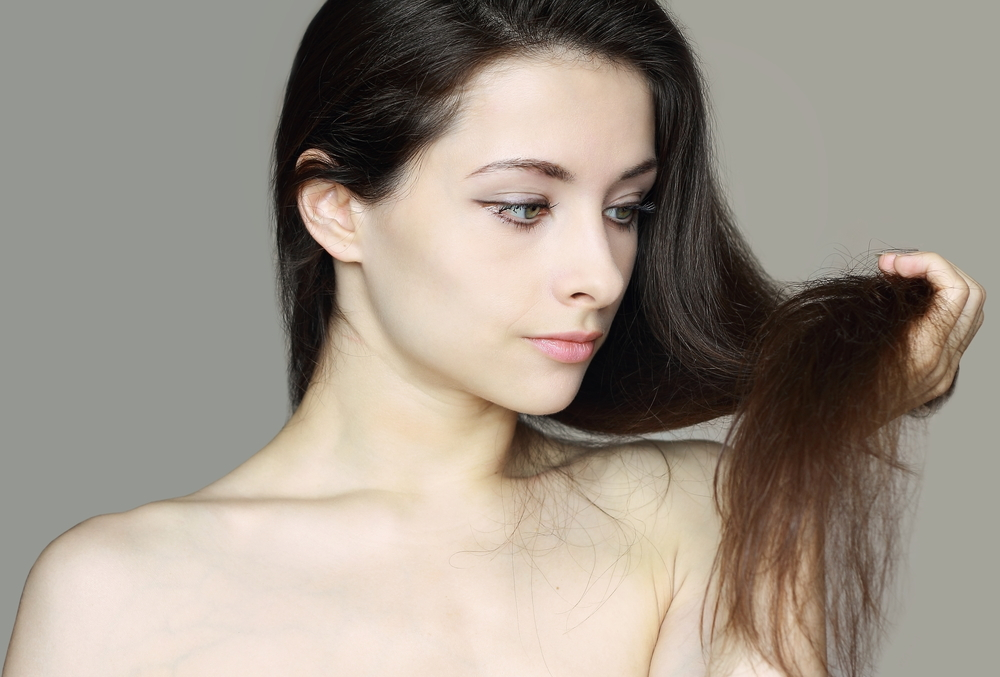How to choose a hair oil? It is not enough to just determine its properties and assign them to the problem. Often, it turns out that, for example, Coconut oil, which was supposed to prevent drying out, causes even more intensified frizz. The secret lies in matching the oil to the porosity of the hair. Below, you will find all the necessary information.
Since we introduced oils to daily hair care, we began to look more closely at the hair structure. Thanks to its careful analysis and the hair needs, we are now able to match the oils concerning fatty acids. This is the best way to make your hair oiling more effective and easier.
It’s time to delve into what hair porosity is!
HAIR POROSITY – The characteristic of the hair structure, namely the degree of its destruction, determined by how high the scales are raised from the hair shaft. Due to the porosity we can distinguish three types of hair, and knowing it, we can guarantee effective care.
You can have:
- low porosity hair (difficult to style, lack volume),
- medium porosity hair (frizzy, weak and dull),
- high porosity hair (dry, damaged and brittle).
Why is the knowledge of hair porosity so important?
Porosity is crucial if you are planning to start hair oiling. It turns out that hair oils can be adjusted to the porosity of the hair and achieve the best results possible. The best effects are ensured as long as the care is matched to the structure of our hair, and its needs. Applying the right oil will not only provide better results but will also prevent weighing down. Overburdening hair is only possible if we use the wrong oil. It is, therefore, worth to define your porosity of hair to treat it consciously.
How to identify hair porosity?
There are three methods to define the porosity of hair that can be done in the comfort of your home. They do not give a 100% guarantee that your hair is just such porosity, but usually, they are sufficient to choose the right oil for your hair consciously. To be sure, the professional hair porosity test can always be done in a trichologist office or at a hair salon with a microscope.
Here are the most common methods for determining hair porosity!
• Water test – pour pure water into a transparent glass, throw in a few strands of hair and observe how they will behave. This study determines the degree of water absorption by the hair, which increases with increasing porosity. The water test is best done on different parts of the hair, because the ends may have a different porosity than the hair at the roots. How to classify the porosity of hair?
a. Low porosity hair will float on the surface for a long time because it will not absorb water;
b. Medium porosity hair will drown slowly because it absorbs water at medium rate;
c. High porosity hair will quickly fall to the bottom as it instantly absorbs water.
• Coconut test – take pure, unrefined Coconut oil and use it for hair oiling. It is best to slightly warm it up to make it easier to distribute over your hair. Leave it in for at least half an hour and then wash it off. The way the hair reacts to Coconut oil gives us quite clear information about porosity. How to read it?
a. Low porosity hair will be smooth and shiny because it loves Coconut oil;
b. Medium porosity hair may be more difficult to comb, and a bit more dull in comparison to healthy hair;
c. High porosity hair will react to Coconut oil badly, will be frizzy and rough.
• Observation test – we stand in front of the mirror and just watch our hair. The condition, how it is arranged and how it looks, it is very easy to recognize the porosity of the hair. What are the main characteristics of various porosity types?
a. Low porosity hair takes a long time to dry, it is difficult to curl, it is very heavy, lacks volume, although, it is smooth and easy to comb;
b. Medium porosity hair is weak, with tendency to splitting, thinning, it is brittle, not very shiny in comparison to healthy hair, it is wavy and becomes frizzy under the influence of moisture;
c. High porosity hair is damaged, brittle, fragile, very dry, usually with split ends, curly, difficult to tame, dull and rough.
Which hair oil to choose?
Determining the porosity of the hair is the key to choosing the right oil. Only a well-fitted product will not overburden your hair and will provide instant and long-lasting effects. It is worth remembering that:
- Low porosity hair like butter and oils with high amount of saturated fatty acids such as Coconut oil, Shea Butter, Babassu oil;
- Medium porosity hair prefers oils rich in monounsaturated fatty acids, omega-7 and omega-9 such as Sweet Almond oil, Argan oil, Avocado oil;
- High porosity hair will enjoy oils with a predominance of polyunsaturated fatty acids, omega-3 and omega-6, such as Grape Seed oil, Sunflower oil, and Black Seed oil.

